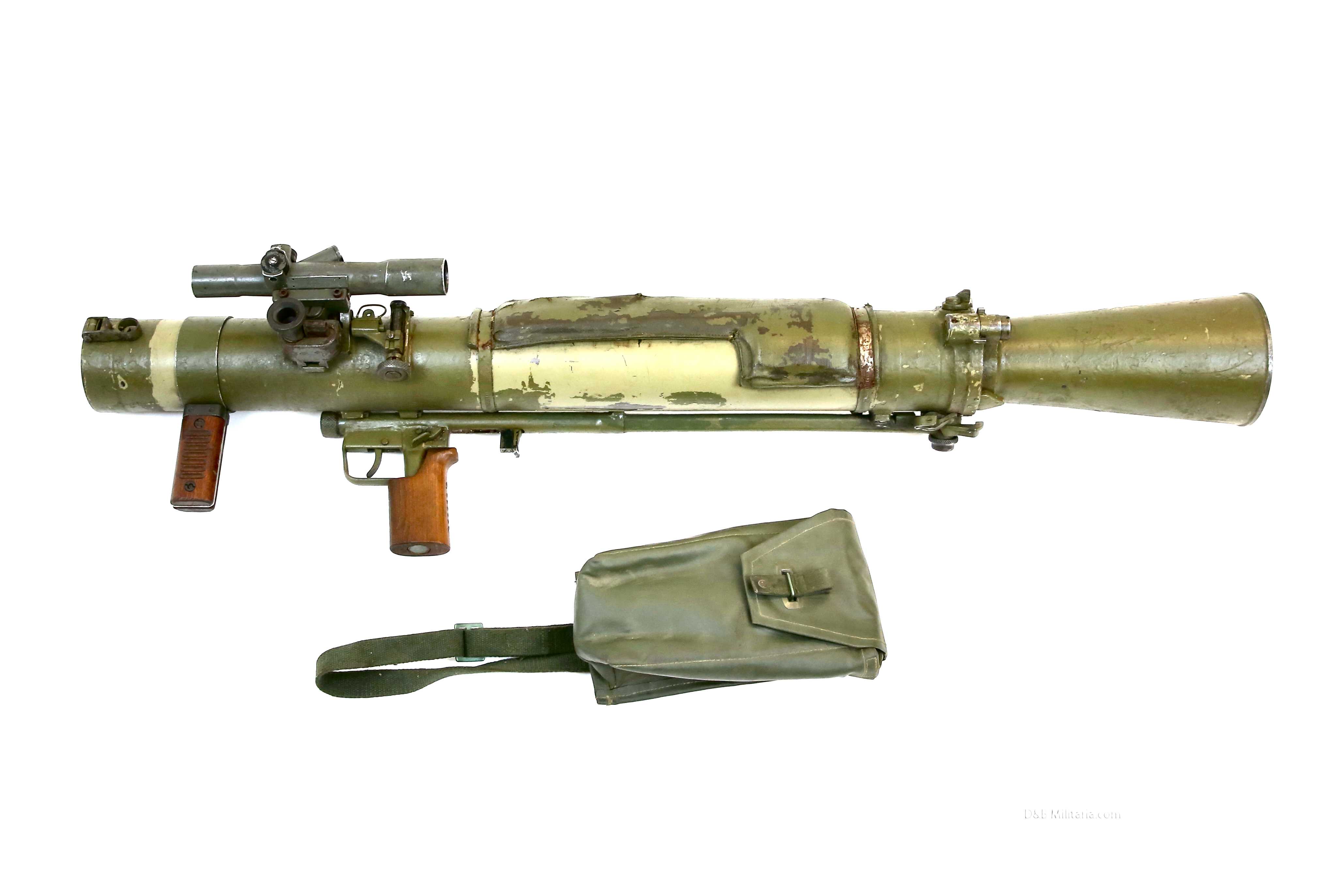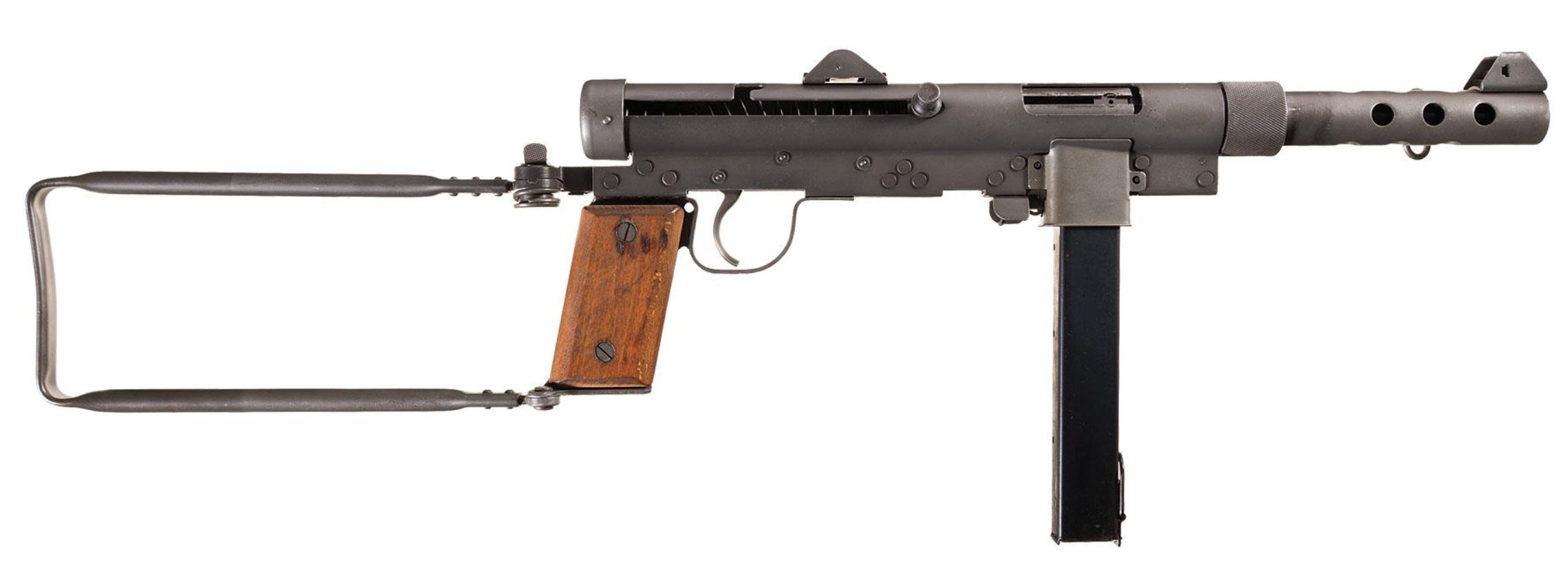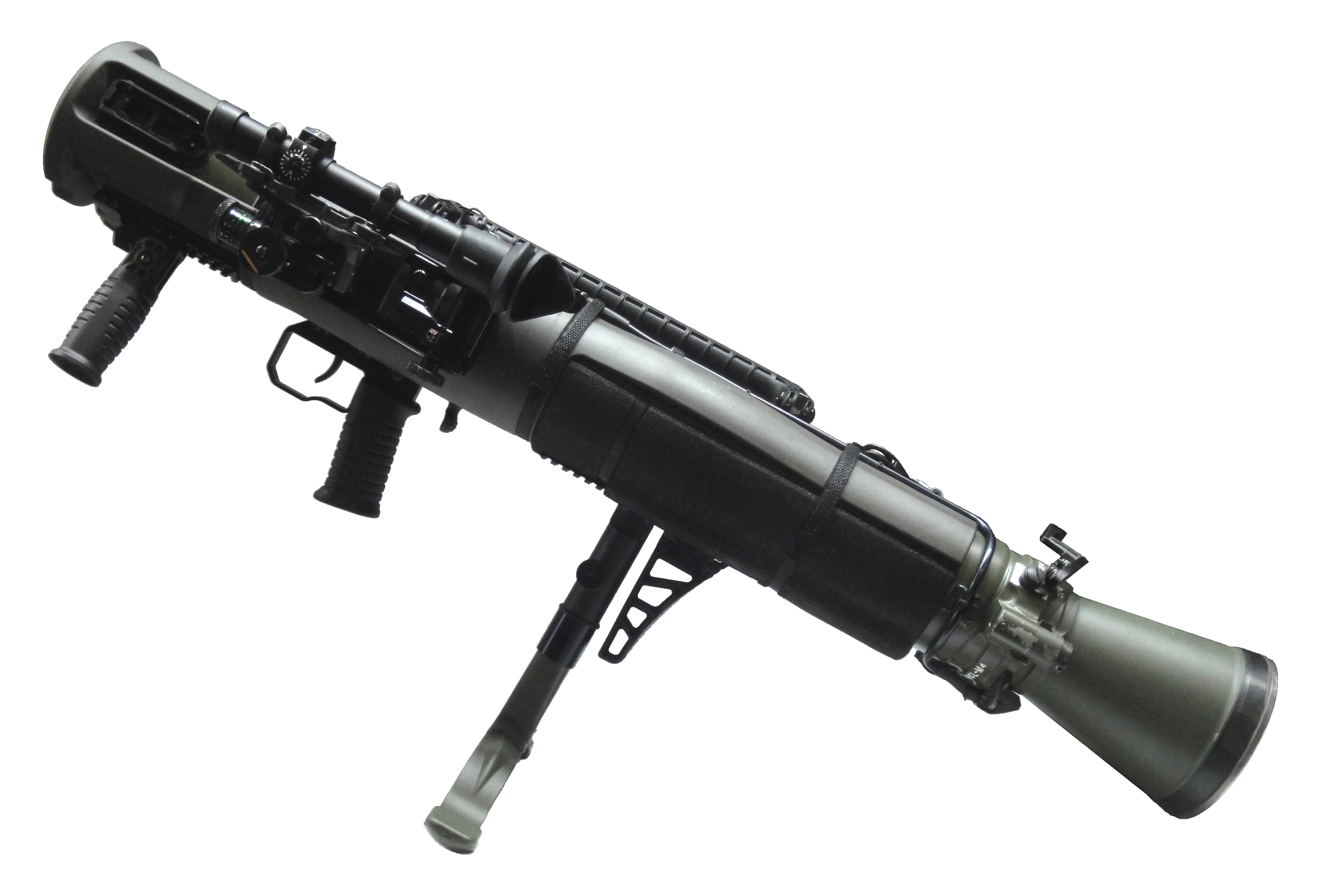Carl Gustav Gun - The Carl Gustaf is a man-portable 84 mm anti-tank recoilless (TLV) gun, manufactured by Saab Bofors Dynamics (1991 to 2000: Bofors Carl Gustaf AB, 1943 to 1991 FFV-Carl Gustaf, 1943 to 1991 FFV-Carl Gustaf , to Carl Gustaf 1991). ) in Sweden. Most of the ammunition used for the Carl Gustav is "traditional" recoilless ammunition, while some modern ammunition has an additional propellant charge that allows the Carl Gustav to be called a rocket launcher.
The first Carl Gustav prototype was produced in 1946 as a light anti-tank weapon, one of many similar designs of the time. While comparable weapons are no longer in use, the Carl Gustav is still widely used in many countries. The combination of lightness, low cost and extremely versatile ammunition makes the Carl Gustav very versatile.
Carl Gustav Gun

It was developed by Carl Gustav Hugo Abramson and Harald Jantzen of the Kungliga Armeforvältningen Tygavdelning ("Material Management Department of the Royal Swedish Army") and produced in the state-owned company "Karl Gustafs Stads Geversfactory" ("Armsfactory)"). founded in 1812 in the town of Eskilstuna"), from which the coat of arms takes its name.
Carl Gustav M45b
The weapon entered Swedish service in 1948 as the 8.4 cm Granatgevär m/48 (Grg m/48) ("Grenade Launcher", Model 1948) and served the same anti-tank role as the American bazooka, British PIAT and German. panzerschreck. However, unlike these weapons, the Carl Gustav used a rifle firing tube that stabilized projectiles by rotation, while other weapons used fins on projectiles to stabilize them.
The use of the recoilless principle ensured more propellant in the Carl Gustav ammunition, resulting in a muzzle velocity of ±290 m/s, compared to ±105 m/s for the Panzerschreck and Bazooka and ±75 m/H.H. for the PIAT. The result was excellent accuracy at long ranges. The Carl Gustav can be used to fire at large stationary targets up to approximately 700 meters, but the relatively low velocity of the projectile limits the firing of moving targets to distances of 400 meters or less.
The Carl Gustav was soon sold worldwide and became a major platoon-level anti-tank weapon in many Western European armies.
It was introduced in 1991. It consists of a shot tube with a thin steel liner in a carbon fiber outer shell. External steel parts were replaced with aluminum alloy or plastic on the M3, which reduced the weight of the weapon from 14.2 kg to 8.5 kg.
Carl Gustav Anti Tank Weapon
After the appearance of the M4, the US Army developed an improved M3 called the M3E1. Improvements are derived from the M4. The use of titanium makes it lighter by 2.7 kg. It is 6cm shorter than the M3 and has an improved carry handle, improved shoulder rest and improved sight.
In 2014, Saab Dynamics introduced the new Carl Gustav M4. The M4 weighs 6.6kg, making it 3.4kg lighter than the M3.
The M4 is also short, specifically 950mm. This was necessary for proper use of the weapon in a built environment. Weight was saved by using lighter materials such as titanium combustion tube liners and a new flame funnel design.

In addition, the M4 is equipped with a laser marking sight (red dot sight), protection for carrying weapons when loaded, adjustable armrests and grips, a shot counter to keep track of how many shots have been fired. 1,000 shot shot tube life, shot relative to the Picatinny rail
Swedish Defence Firm Saab Plans To Manufacture Carl Gustaf M4 Weapon In India
Today Carl Gustav is also used for other purposes. The British Special Air Service, US Army Special Forces, and US Army Rangers use the M3 against bunkers.
It is still useful as an anti-tank weapon, especially against tanks from the 1950s and 1960s, which are still in use in many areas, and against other armored vehicles.
In one incident during the Falklands War, British Marines with their Carl Gustav, small arms and M72 LAW 66 mm anti-tank missiles defending Grytviken, drove off the Argentinian corvette ARA Guirico (P-32).
May 2009: Members of the US Army Special Forces practice with a Carl Gustav TLV in Basra during the Iraq War. Note the firing position and the torch at the rear.
Bangladesh Army Purchases Carl Gustaf M4 Recoilless Weapon
The Carl Gustaf is a recoilless gun (TLV) for tank warfare. The weapon has a rifled firing barrel and a mechanical primer, with a shell percussion cap on the side. Disadvantage of TLV is the jet flame at the rear, and hence TLV cannot be used in closed arrangement. The weapon has an effective range (on moving targets) of 400 meters and the projectile can penetrate approximately 35 centimeters of armored steel. Muzzle velocity is 310 meters per second. In addition to shaped charge High Explosive Anti-Tank (HEAT) shells, smoke and illumination shells were also produced for Karl Gustaf.
The weapon uses a loose shell and is therefore always reusable, unlike single-use weapons such as the M72 LAW or M47 Dragon, where the empty shot tube is discarded after firing.
The rifle scope is located on the left front of the weapon, and the weapon can be mounted with a small spring-loaded tripod located in front of the shoulder rest.

The original weapon consisted of a rifled firing tube with a rear-mounted flame funnel. Additionally, two handles and a shoulder rest are attached to the tube. The weapon is mounted on the left side with a fixed sight, but usually with a telescopic sight objective, possibly fitted with a laser rangefinder. Illuminated front sun visors are available for steady vision for night targets. Night vision goggles can also be used in the dark. The control stick is used to move the hinged flamethrower away and load the weapon.
Carl Gustaf Recoilless Rifle 3d Model $79
Carl Gustav is usually operated by a two-man crew: the TLV gunner and the TLV helper. The gunner operates the gun and instructs the assistant who is responsible for ammunition and loading and also controls the threat area behind the gun.
An assistant close to the shooter supports him if needed to keep his balance.
Standard accessories for the Carl Gustav include a bag with scopes and accessories, a bag with tools and spare parts, a bag with cleaning products, and a canvas or canvas pistol holster.
And the American M20 3.5-inch (88.9 mm) rocket launcher ("Bazooka") which entered the Royal Netherlands Army (KL) in the late 1940s and early 1950s, respectively.
Carl Gustav M45
Like many other NATO countries, the Carl Gustav TLV was used by the KL Infantry and Marine Corps as a platoon weapon (the group-level anti-tank weapon was the M72 LAW, the company-level anti-tank weapon the M47 Dragoon.
Carry personal equipment including personal weapons (the shooter had a FN Browning as his personal weapon, a ±1990 Glock 17 9 mm 1.5 kg pistol, an auxiliary one 9 mm Uzi submachine gun ± 4 kg
The vehicle (YP-408 PWI-PC or AMX PRI-PC) supplied 24 rounds of ammunition for the TLV.

TLVs in platoon commando groups were replaced by M47 Dragoons, and each armored infantry group was assigned a 2-man TLV team, increasing their armor-fighting capability.
Lf3d068 Carl Gustaf M4 Multi Role Weapon System W/cover (1/35 Scale)
JGSDF Japanese forces with Howa 84RR in February 2014. Howa 84RR is the Japanese version of Carl Gustav
In Sweden, this weapon is known as the 8.4 cm Granatgever m/48 (Grg m/48) ("Grenade Launcher", Model 1948) and is nicknamed Stupror (drain pipe). In various countries, Carl Gustav is also known by other names:
The weapons have been exported to about 40 countries, including the Netherlands, Germany, the United Kingdom, the United States, Canada and Israel. Weapons are manufactured under license in many countries.
Carl Gustav ammunition has been continuously improved since its introduction. Weapons with older HEAT (High Explosive Anti Tank) shells are not very effective against modern tanks, but are very effective against lightly armored vehicles and can be used on bunkers and buildings with HEDP (High Explosive Dual Purpose) shells. In addition, there are also IHEAT (enhanced heat), HE (high explosive), smoke shells and light shells (star shells or flares). Two (gunner and loader), but can be used by one operator at a lower rate. of fire
Swden's Saab Awaits Government Nod To Produce Carl Gustaf M4 Weapon System In India
The Carl Gustaf 8.4 cm recoilless rifle (Swedish pronunciation: [kɑːɭ ˈɡɵ̂sːtav], named after the Karl Gustaf Stadts Geversfactory that initially produced it) is an 84 mm (3.3 in) caliber, recoilless rifle developed by Carl Gustaf. Developed by the Royal Swedish Army Materiel Administration in the late 1940s as a short-range anti-tank and support weapon for infantry, it has been highly export-successful worldwide and is a popular multi-purpose support weapon in use today. Many nations. The Carl Gustaf 84mm recoilless rifle is a low-cost, lightweight weapon that uses a large amount of ammunition, making it highly flexible and suitable for a wide variety of tasks.
Development of the initial model began in 1946, based on experience with the earlier Carl Gustaf 20mm recoilless rifle and the success of portable rocket launchers such as the Bazooka and Panzerschreck during World War II. The initial model was produced by Forsverets Fabrikswerk (FFV) under Karl Gustafs Stadts Geversfactory and the weapon was designated the 8.4 cm Granatgever m/48, (8.4 cm grg m/48 – "8.4 cm", grad rifle. Model 1948) in Swedish.
Carl gustav jacob jacobi, carl gustav jung español, carl gustav machine gun, carl gustav jung pdf, carl gustav jung test, carl gustav jung, carl gustav jung books, carl gustav jung quotes, carl gustav jung archetypes, carl gustav jung biografia, carl gustav jung amazon, m45 carl gustav
0 Comments